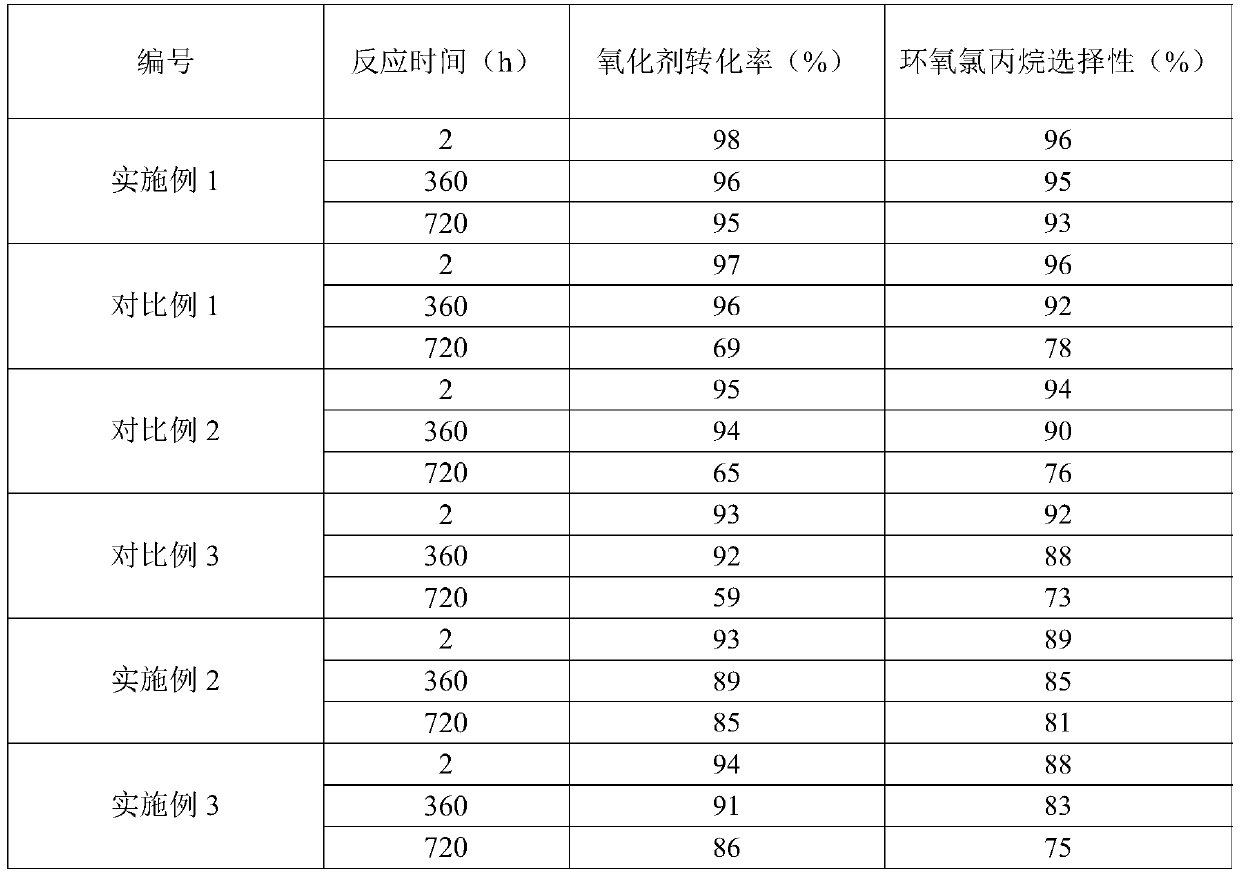A kind of chloropropene oxidation method
A technology of chloropropene and oxidant, applied in organic chemistry and other directions, can solve the problems of many by-products, large production energy consumption, affecting product refining and separation, etc., to achieve stable oxidant conversion rate, prolong single-pass service life, and be suitable for large-scale application. Effect
- Summary
- Abstract
- Description
- Claims
- Application Information
AI Technical Summary
Problems solved by technology
Method used
Image
Examples
Embodiment 1
[0074] The reaction is carried out in two miniature fixed-bed reactors connected in series, wherein each reactor is filled with a catalyst bed with a circular cross-section and an equal diameter. Based on the flow direction of the liquid material, the first upstream The ratio of the inner diameter of the first catalyst bed in the first reactor to the inner diameter of the second catalyst bed in the downstream second reactor is 2:1, and the first catalyst bed is filled with a hollow titanium-silicon molecular sieve ( A spherical catalyst with a volume average particle size of 500 μm and a catalyst density of 0.70 g / cm 3 ), the second catalyst bed is filled with titanium-silicon molecular sieve TS-1 (a spherical catalyst with a volume average particle diameter of 500 μm and a density of 0.76 g / cm 3 ), the weight ratio of hollow titanium-silicon molecular sieve to titanium-silicon molecular sieve TS-1 is 2:1.
[0075] Allyl chloride, hydrogen peroxide (provided in the form of 30...
Embodiment 2
[0089] Adopt the same method as embodiment 1 to oxidize chloropropene, the difference is that the molding titanium-silicon molecular sieve TS-1 in the second catalyst bed uses the same amount of molding titanium-silicon molecular sieve Ti-MCM-41 (volume average particle diameter is 500 μm A spherical catalyst with a density of 0.61g / cm 3 )replace.
[0090] The results are listed in Table 1 for reaction times of 2 hours, 360 hours and 720 hours.
Embodiment 3
[0092] Adopt the same method oxidation chloropropene as embodiment 1, difference is, the molding titanium-silicon molecular sieve TS-1 in the second catalyst bed layer in the second reactor uses the same amount of molding titanium-silicon molecular sieve Ti-Beta (volume Spherical catalyst with an average particle size of 500 μm and a density of 0.77 g / cm 3 )replace.
[0093] The results are listed in Table 1 for reaction times of 2 hours, 360 hours and 720 hours.
[0094] Table 1
[0095]
[0096] Comparing the data of Example 1 with Comparative Examples 1-3, it can be seen that when the hollow titanium-silicon molecular sieve is used in combination with the titanium-silicon molecular sieve, and the hollow titanium-silicon molecular sieve is located upstream of the titanium-silicon molecular sieve, the liquid mixture flows through the hollow The superficial velocity of the titanium-silicon molecular sieve is lower than the superficial velocity of the titanium-silicon mole...
PUM
| Property | Measurement | Unit |
|---|---|---|
| length | aaaaa | aaaaa |
| adsorption capacity | aaaaa | aaaaa |
| particle size | aaaaa | aaaaa |
Abstract
Description
Claims
Application Information
 Login to View More
Login to View More - R&D
- Intellectual Property
- Life Sciences
- Materials
- Tech Scout
- Unparalleled Data Quality
- Higher Quality Content
- 60% Fewer Hallucinations
Browse by: Latest US Patents, China's latest patents, Technical Efficacy Thesaurus, Application Domain, Technology Topic, Popular Technical Reports.
© 2025 PatSnap. All rights reserved.Legal|Privacy policy|Modern Slavery Act Transparency Statement|Sitemap|About US| Contact US: help@patsnap.com



